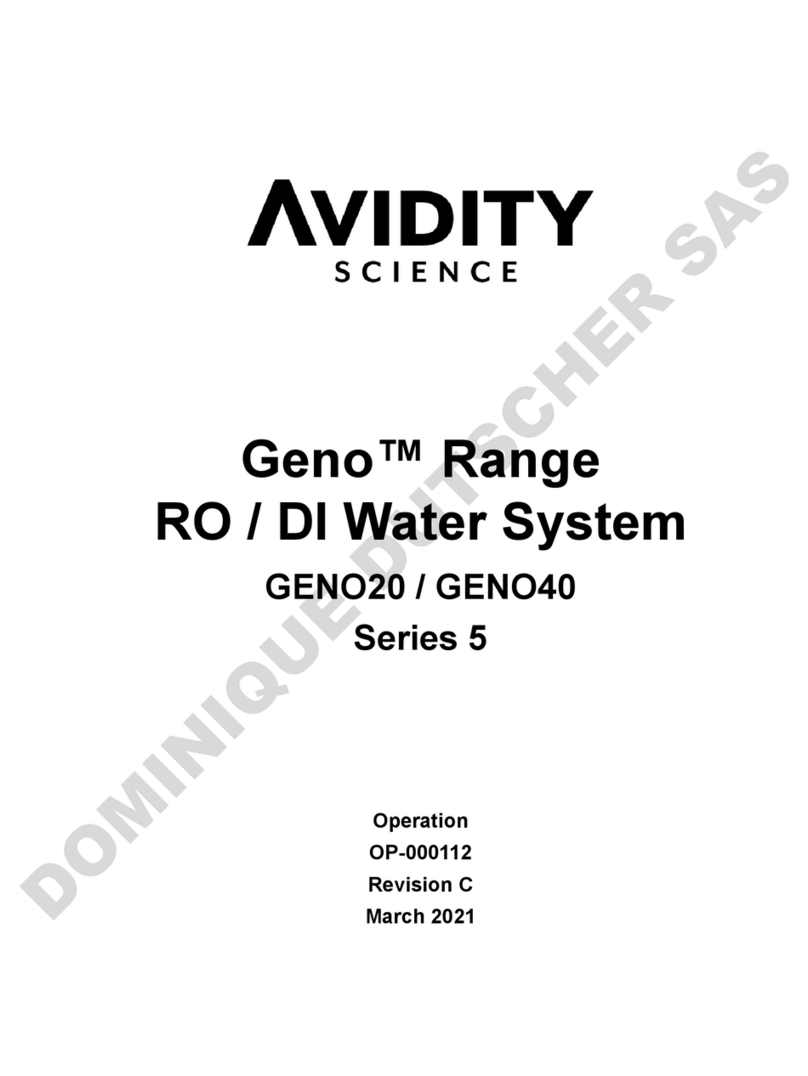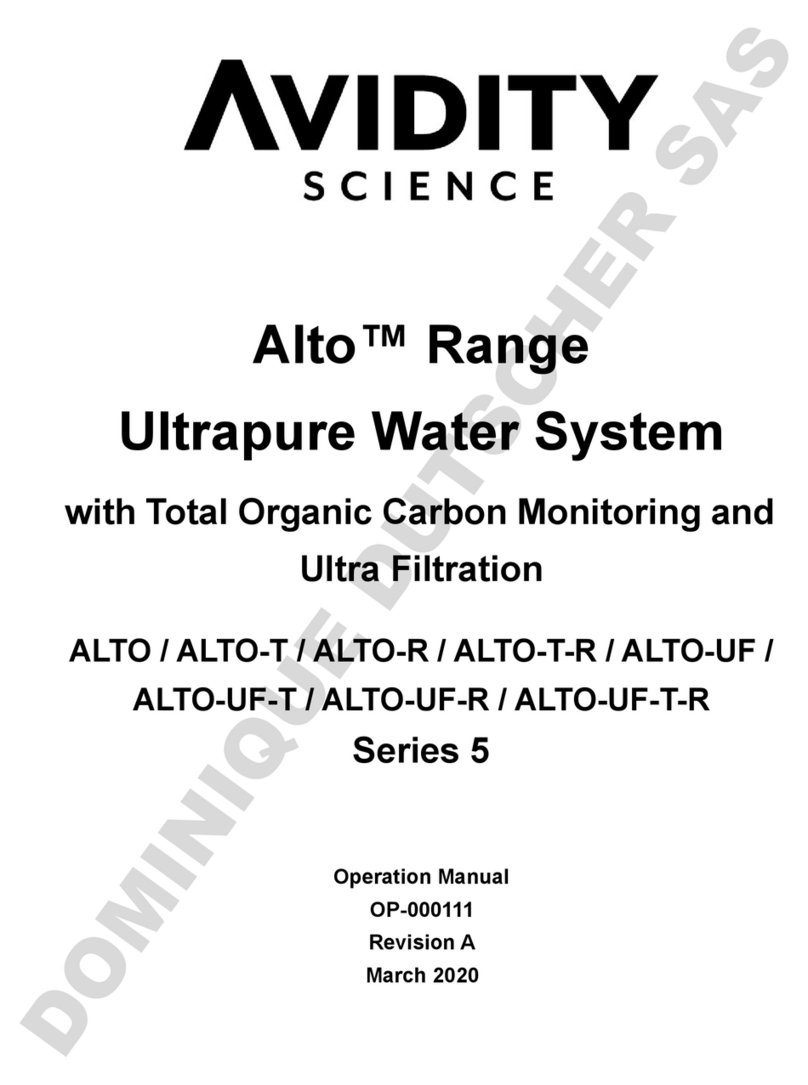
Duo Range Ultra-Pure Water System Operation Manual Avidity Science, LLC.
2Introduction
Purification Process
In normal operation, feed water enters the system through the Inlet Solenoid Valve (V3), engaging the
Reverse Osmosis (RO) Pump (P1). The conductivity of the feed water is measured by the feed water
conductivity sensor (Q1) before it reaches the pump.
The untreated water is pumped through the carbon-based, Pre-Treatment Module (TC001) to detain
larger particles greater that 20 micron and chemicals such as insecticides, pesticides, herbicides and chlo-
rides. The pre-treatment module is essential to protecting the RO membranes and must be replaced at the
stated intervals to retain the integrity of the RO membranes as effectively and efficiently as possible.
From the pre-treatment module, water passes over one or two RO Modules (membranes) (TC013). The
membranes reject almost all bacteria, viruses, heavy metal compounds and organics, as well as 98 percent
of the salt content from the water. A percentage of the rejected water, referred to as the concentrate, is
sent to drain through a Flow Restrictor (R1) while the remaining water passes through the membranes
again, conserving water usage.
The product water, referred to as permeate, is measured through the Permeate Conductivity
Sensor (Q2) as it leaves the membrane. Should the water quality measure within the set limits, the Perme-
ate Solenoid Valve (V5) is opened and the permeate water reaches the next level of purification. Should
the water quality measure outside of the set-limits, the system will display a warning for the user to act
accordingly and the permeate is recycled or flushed to drain as part of the Auto-Flushing feature.
The accepted water is pushed through the Endure Purification Pack 1 (TC002) which contains ion-
exchange resins. The deionization process occurs and the permeate water quality is measured by the Post-
treatment Conductivity Sensor (Q3). The permeate water is fed into a required storage tank (TANK)
where it is held as Type 2 water. The storage tank may be equipped with an Ultraviolet (UV) Light
(TC008) to maintain bacteria sterilization in the stored water. Type 2 water can be dispensed from the tank
through the dispenser tap on the storage tank when required.
Type 1 water is made through a polishing process that begins with the activation of the circulation pump
by either the Dispense Controller or the Remote Dispenser to draw Type 2 water from the storage tank.
The water flow from the tank is monitored by a flow sensor (SENS00004). The polishing process takes
the Type 2 water back into the Duo unit, over the UV light (TC003), where the conductivity and Total
Organic Carbon (TOC) is measured by the Q4 sensor. The water then passes through the Endure Purifi-
cation Pack 2 (TC009) which is filled with a high grade of mixed bed ion-exchange resins which enables
the optimum resistivity of 18.2 MΩ-cm to be reached. The resistivity is verified as it leaves the Type 1
Conductivity sensor (Q5) and the temperature is then verified by the temperature sensor (T1).
If the temperature is outside the set-limits, then the flushing solenoid valve diverts the water to drain. A
warning is displayed on the dispense control display. Flushing will continue until the temperature returns
to its normal-operation setting.
When the user activates the dispenser, the dispense solenoid valve (V8) opens and desired water volume is
dispensed. A standard filter (TC011) can be installed for extra filtration.
On Ultra-Filter (UF) Duo units, an Ultra-Filter (TC004) is installed on the dispenser to add a final point of
filtration to provide water with reduced levels of endotoxins and viruses.





























